Navigating European import regulations for coffee tools can be overwhelming. Complex directives, changing standards, and strict enforcement create barriers that can halt shipments and damage business relationships.
Coffee tools imported to the EU must comply with food contact material regulations, obtain CE marking, meet REACH and RoHS directives, satisfy the General Product Safety Directive, and adhere to packaging regulations. Documentation including certificates of conformity and technical files is mandatory.
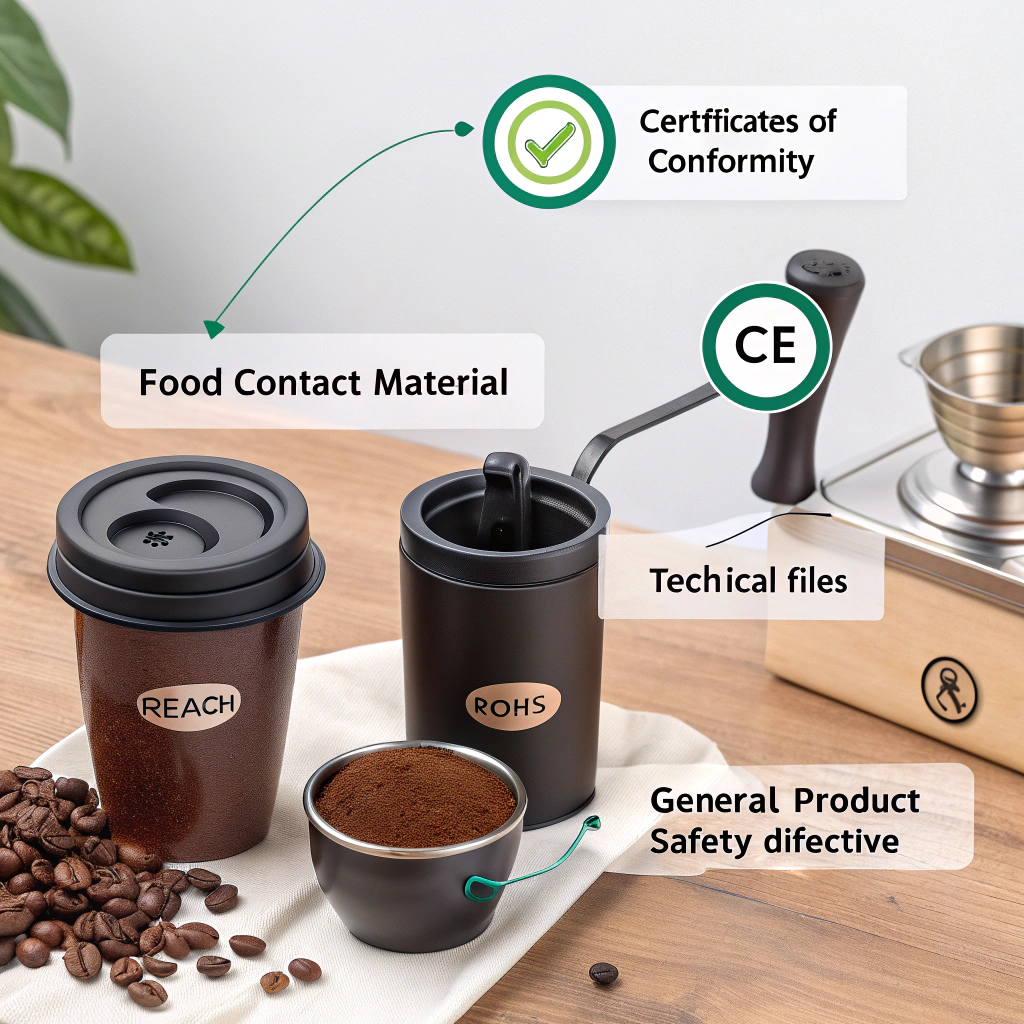
After years of manufacturing premium coffee accessories and exporting to the European market, I've learned that understanding regulatory requirements is crucial for successful business operations. Let me share what I've discovered about the specific regulations that affect coffee tool imports to Europe.
What Food Contact Material Regulations Apply To Coffee Tools?
Navigating food contact regulations can be confusing and overwhelming. Non-compliant materials can lead to product recalls, import bans, and serious damage to your brand reputation.
All coffee tools that contact food or beverages must comply with EU Regulation 1935/2004 and specific material regulations. Stainless steel must meet EN 10088 standards, while plastics must adhere to EU Regulation 10/2011, requiring migration testing and proper documentation.
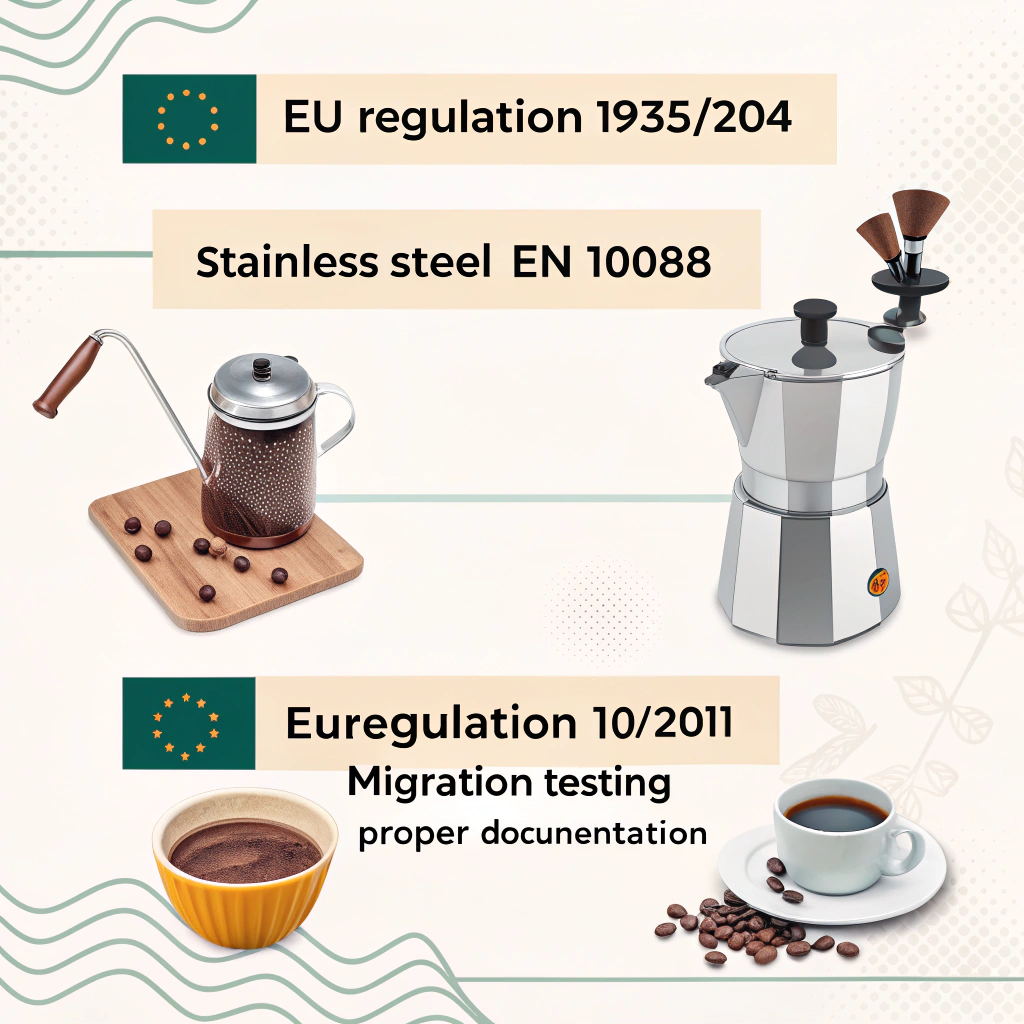
The European Union takes food safety seriously, especially for products that regularly come into contact with consumables. For coffee tools manufacturers like us, this means rigorous compliance with several interconnected regulations. The Framework Regulation (EC) No. 1935/2004 serves as the foundation, requiring that materials don't transfer constituents to food in quantities that could endanger human health or change food composition.
For our stainless steel components in portafilters, shower screens, and baskets, we must adhere to specific material standards:
| Material Type | Applicable Standard | Key Requirements |
|---|---|---|
| Stainless Steel | EN 10088 | 304/316 grade, specific composition limits for nickel and chromium |
| Food-grade Plastics | Regulation (EU) No. 10/2011 | Migration testing, prohibited substances list |
| Silicone Components | BfR Recommendation XV | Purity standards, volatile matter limits |
Each material requires specific migration testing to ensure no harmful substances leach into coffee during normal use. This testing must be performed by accredited laboratories, and results must be documented in a Declaration of Compliance (DoC) that accompanies every shipment. I've found that maintaining comprehensive technical files with regular testing updates is essential, as EU customs authorities increasingly request these documents during import clearance.
Why Is CE Marking Essential For Coffee Tools?
Importing coffee tools without proper CE marking can lead to customs rejection and significant financial losses. Many distributors discover this requirement too late, after shipments are already detained at European borders.
CE marking is mandatory for coffee tools that fall under specific EU directives, particularly those with electrical components or pressure vessels. The marking indicates conformity with health, safety, and environmental protection standards and requires thorough testing, technical documentation, and a conformity declaration.
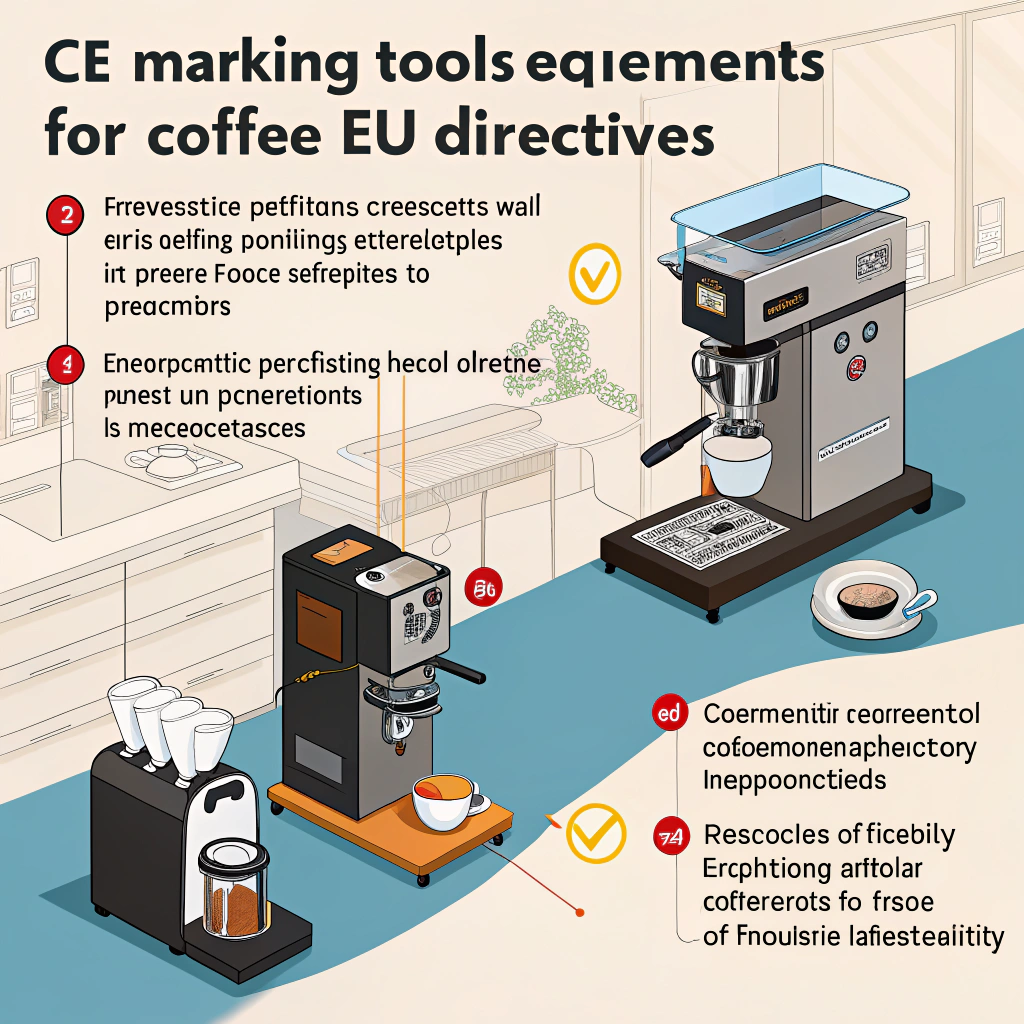
The CE marking represents a manufacturer's declaration that products comply with the essential requirements of relevant European directives. For coffee tools, this primarily affects electric grinders and any tools with electronic components, which must comply with several directives including the Low Voltage Directive (LVD), Electromagnetic Compatibility Directive (EMC), and sometimes the Machinery Directive.
The certification process involves multiple stages of compliance:
| Directive | Applies To | Key Testing Requirements |
|---|---|---|
| Low Voltage Directive | Electric grinders, heated tampers | Electrical safety, insulation, temperature rise |
| EMC Directive | All electronic coffee tools | Emission testing, immunity testing |
| Machinery Directive | Mechanical coffee tools with moving parts | Risk assessment, safety mechanisms |
| RoHS Directive | All electronic components | Hazardous substance testing |
I've learned through experience that obtaining CE marking isn't simply a matter of adding a symbol to your product. It requires a comprehensive technical file including risk assessments, test reports from accredited laboratories, user manuals in appropriate languages, and a formal Declaration of Conformity (DoC). For our electric grinders, we must maintain this documentation for ten years after the last product unit is manufactured. Self-certification is possible for some coffee tools, but third-party certification from a Notified Body provides additional credibility and may be required for certain categories of products.
How Does REACH Regulation Impact Coffee Tool Manufacturing?
Chemical substances in coffee tools face intense scrutiny under REACH regulations. Suppliers who ignore these requirements risk having entire product lines banned from the European market with no warning.
REACH regulation controls chemicals used in products entering the EU market. Coffee tool manufacturers must register chemicals, disclose Substances of Very High Concern (SVHCs) exceeding 0.1% concentration, and may need to substitute harmful substances with safer alternatives.
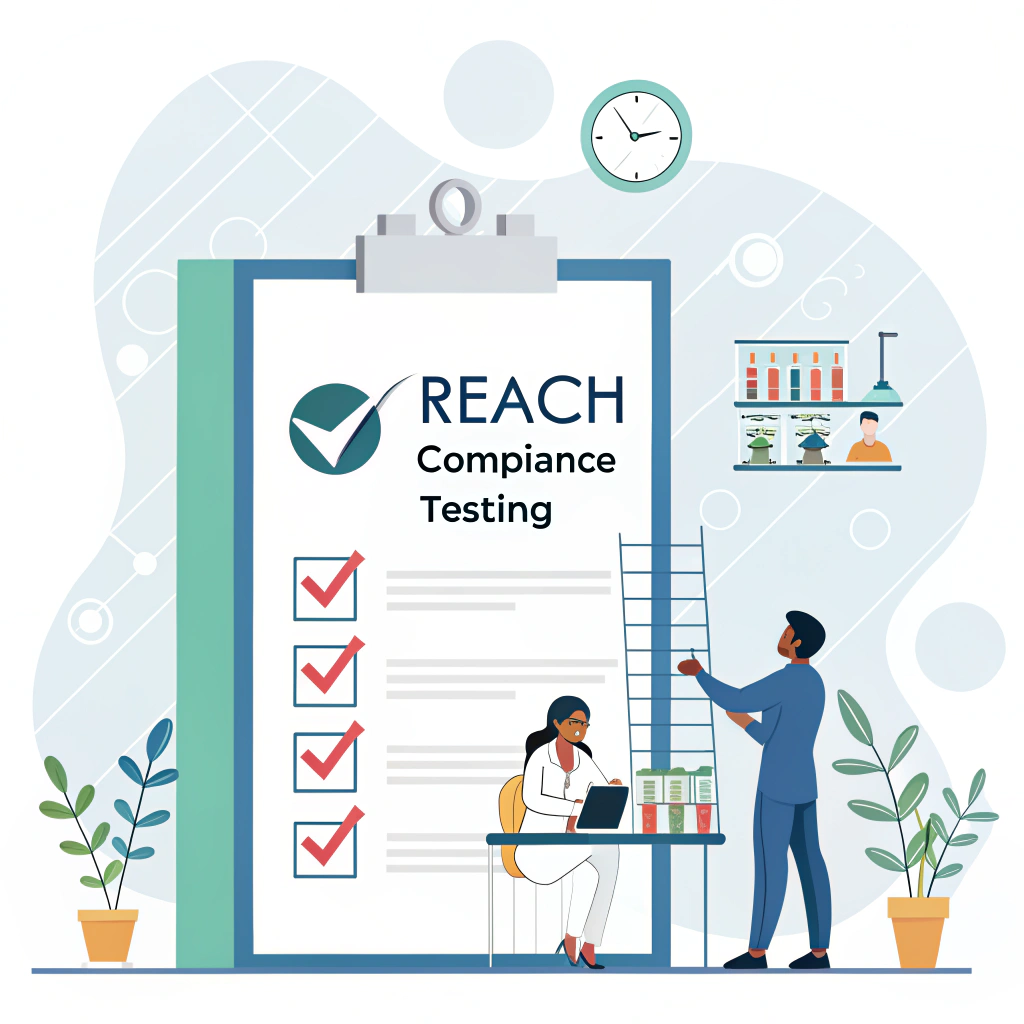
REACH (Registration, Evaluation, Authorization and Restriction of Chemicals) is perhaps the most comprehensive chemical regulation globally, directly impacting how we manufacture coffee tools for the European market. The regulation's core objective is to improve protection of human health and the environment from chemical risks while enhancing innovation in the EU chemicals industry.
For our coffee accessories production, REACH compliance involves several critical processes:
| REACH Component | Requirements | Implementation in Coffee Tools |
|---|---|---|
| Chemical Registration | Pre-registration of substances | Affects metal alloys, coatings, adhesives |
| SVHC Compliance | Monitor Candidate List updates (biannual) | Particularly relevant for plastic components and coatings |
| Information Requirements | Communication through supply chain | Documentation of chemical composition from raw material suppliers |
| Substitution Principle | Replace harmful chemicals with safer alternatives | Reformulation of certain handle materials and surface treatments |
I've found that maintaining REACH compliance requires vigilance and adaptability. The SVHC list expands twice yearly, meaning a fully compliant product could suddenly become non-compliant without any manufacturing changes. Our approach includes requesting comprehensive material declarations from suppliers, performing regular XRF testing on components, and maintaining a database of all chemicals used in our production process. For tampers and distribution tools with complex material compositions, we conduct more thorough chemical analyses to ensure no restricted substances exceed threshold limits. The investment in compliance is substantial but necessary to maintain uninterrupted access to the European market.
What Documentation Is Required For Customs Clearance Of Coffee Tools?
Missing or incorrect import documentation causes costly delays at customs. Coffee tool shipments can be held for weeks, destroying delivery timelines and damaging buyer relationships when proper preparation is neglected.
Coffee tools require commercial invoices, packing lists, bills of lading, certificates of origin, CE declarations of conformity, and material safety data sheets for EU customs clearance. Additional documents like food contact declarations and REACH compliance statements expedite the process.
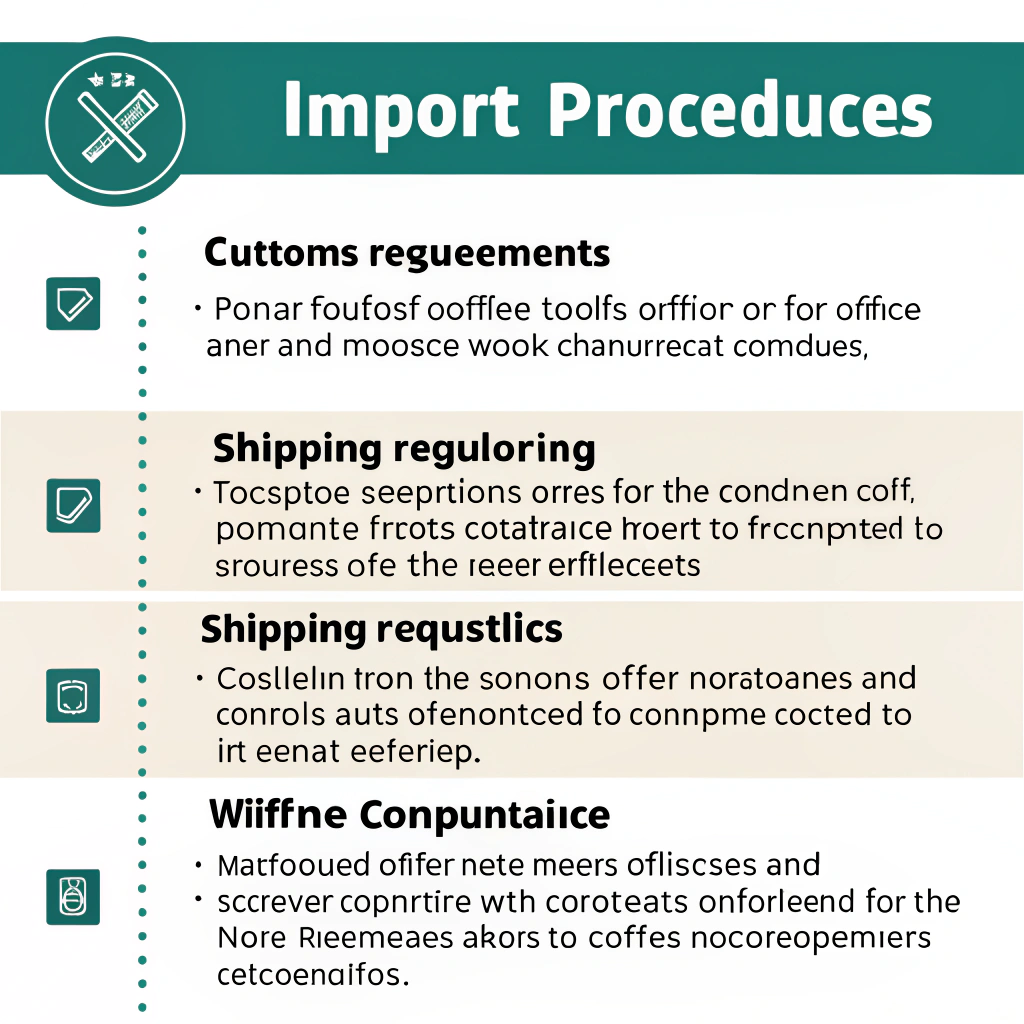
Navigating EU customs procedures requires meticulous documentation preparation. After shipping thousands of coffee tool orders to European destinations, I've refined our documentation process to minimize delays and ensure smooth clearance. The European Union operates as a customs union, but individual member states may have slight variations in their requirements.
The essential documentation package for every coffee tool shipment includes:
| Document Type | Purpose | Special Considerations |
|---|---|---|
| Commercial Invoice | Declares value, origin, and description | Must include HS codes and EORI number |
| Packing List | Details contents of each package | Weight and dimensions critical for shipping costs |
| Bill of Lading/Airway Bill | Transport contract | Original copies may be required for certain countries |
| Certificate of Origin | Proves country of manufacture | Form A for GSP benefits if applicable |
| Declaration of Conformity | Attests to regulatory compliance | Must reference relevant EU directives |
| Technical File Summary | Demonstrates testing and standards | Available upon request by authorities |
| Food Contact Declaration | Confirms suitability for beverage contact | Required for portafilters, baskets, tampers |
Beyond these standard documents, I've learned to include material composition sheets that detail the exact materials used in each component. This proactive approach has significantly reduced customs queries. For stainless steel components like portafilters and shower screens, including the specific grade (typically 304 or 316) and certification to EN standards has proven valuable. When shipping to countries like Germany or France, which have particularly stringent enforcement, we include additional test reports demonstrating food contact safety and REACH compliance. Developing relationships with customs brokers specializing in hospitality equipment has also been invaluable for navigating country-specific requirements that may not be explicitly documented in official regulations.
How Do Packaging And Labeling Requirements Affect Coffee Tool Imports?
Incorrect packaging or labeling can render perfectly manufactured coffee tools non-compliant in Europe. Distributors often discover packaging violations only after products are rejected by regulatory authorities.
Coffee tools exported to Europe require packaging that complies with the Packaging and Packaging Waste Directive. Labels must include clear product identification, manufacturer details, CE marking where applicable, and instructions in appropriate languages for target markets.

The European Union's approach to packaging extends beyond mere product protection to encompass environmental sustainability and consumer information. For coffee tool manufacturers, this creates a dual challenge: designing packaging that protects precision equipment during transit while meeting strict ecological and informational requirements.
The packaging regulations affecting coffee tools include several interconnected elements:
| Regulation Area | Specific Requirements | Implementation Strategy |
|---|---|---|
| Packaging Material | Compliance with heavy metal limits (Directive 94/62/EC) | Testing and certification of packaging materials |
| Waste Reduction | Producer responsibility for recycling | Participation in Green Dot or equivalent schemes |
| Consumer Information | Product identification and traceability | Unique lot numbers and manufacturing dates |
| Multilingual Requirements | Instructions in official languages | Market-specific packaging variations |
| Environmental Markings | Recycling symbols and material identification | Standardized icons for consumer guidance |
From my experience shipping to multiple European markets, I've learned that packaging compliance varies significantly between countries despite the harmonized EU framework. In Germany, participation in the dual system (Green Dot) is effectively mandatory, requiring financial contributions to packaging recycling systems. For products destined for Nordic countries, we've implemented the more stringent voluntary Nordic Swan ecolabel standards, which has opened premium market segments.
The multilingual requirement presents particular challenges for small coffee tools like distribution tools and tampers with limited packaging space. Our solution includes QR codes linking to comprehensive digital instruction manuals in all 24 official EU languages, satisfying both regulatory requirements and user needs. For wholesale customers, we provide market-specific compliance documentation that they can incorporate into their distribution systems, creating a seamless regulatory chain from manufacturer to end consumer.
Conclusion
Importing coffee tools to Europe requires compliance with food contact regulations, CE marking, REACH directives, comprehensive documentation, and proper packaging. Meeting these requirements ensures smooth customs clearance and builds trust with European distributors.




